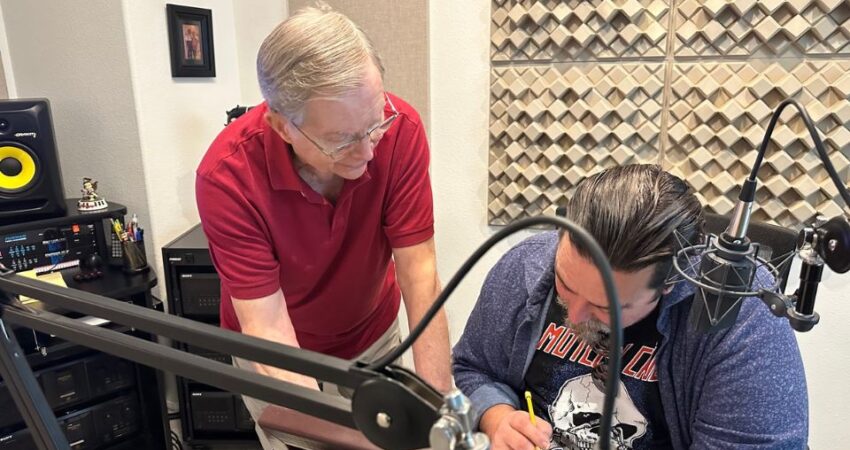My goal with every student is to bring out the best in his or her natural speaking style in the reads he or she delivers in voice over performance. This means never sounding as if the performance is read aloud, as opposed to in an authentic, highly motivated, conversational manner.
To that end, in each session, I take the student through the process of marking the script for emphasis and pause. I ask the student what single word expresses what the script is about. (Most beginning students don’t have a clue) After explaining how to figure that out, the student then marks the script first as his or her instincts dictate. Then I read through the script, line by line, correcting where necessary and explaining why I made the correction, and when this is finished, I have the student run through the script without interruption to get an impression of his or her comfort with the read.
The next step is to critique the read, first to praise the strong points, then go over the problem areas. Once we have gone over the problem areas, I will have the student do a new read and repeat the process, as before, always stressing the positives and quietly but firmly pointing out the areas that need work and why. When the student has performed at the level that should be reasonably expected for that stage of instruction, we move on to the next script and so on. My goal is to get the student to be relaxed and at ease as much as possible during the lesson.
Throughout the lesson, I am always referring to language dynamics issues: why we emphasize certain parts of speech and de-emphasize others, talking in streams of consciousness, how to handle lists, how the energy increases in a phrase or sentence, the importance of strong endings, and why some endings are weak. We also discuss the acting considerations: mood that the subject of the script suggests, degree of animation (rise and fall in pitch), why and where we pause, and the importance of keeping reasonably consistent volume since the music will frequently be added to the dry read, and talking, not reading out loud, mostly in a consistently declarative (statement) delivery.
As part of the lesson/practice regimen, I assign my students to read pertinent chapters of my book, The Voice Over Actor’s Handbook, specifically to address the problems we are dealing with at each lesson so that they have specific explanations and instruction to understand and work on those problems. In addition, in the first six lessons, the first book of scripts is accompanied by professional reads of the scripts being worked on that are provided to the student on wav files. This gives the student a source to imitate for pace, pause, mood, and emphasis.
Every lesson is recorded so that the student can hear his or her reads and my observations and instruction both from in-person and online sessions.
It is very important to me that the student enjoys the learning experience and doesn’t react to it as a chore. Learning to do this well is not easy, and I try very hard to counsel patience.



